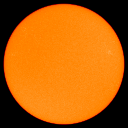It is shortly after midnight, here in Glendale, Arizona.
The temperature has dropped to 97° (The temperature dropped 5°F during the time that I dictated this post). Humidity is over 30% and the dewpoint is about 61°. It's even fairly breezy with the wind between 6 and 12 knots There is lightning to the north and a hint of dust in the air
What, you ask, does all this mean and why, pray tell, would I be so excited about it?

One word. One word that for every Arizona native brings a sense of hope and anticipation. One word that visitors to the state often do not understand - or believe that it pertains to a place like Phoenix. One word that can conjure images of haboobs- dust storms like those on the Middle East and Sahara with walls of dirt 10,000 feet into the sky moving at 60 knots or more. Rain falling at rates of inches per minute- sometimes as "named" storms, being the remnants of Tropical Storms or Hurricanes like Norbert in September 2014. One word that brings up stories of arroyos and washes suddenly filling with feet of water and debris moving at hundreds of cubic yards per second, without a cloud in the sky or rain within 15 to 20 miles.
That word is "Monsoon."

And it appears our monsoon season has finally started! Dry Summer* is over and Wet Summer* has finally begun!
* The Sonoran Desert has two summer seasons. The first summer season is "dry summer". This begins in April and runs through June. During this time temperatures routinely are over 108° in the shade as a daily high and there is little to no rain. The second summer season in the Sonoran Desert is "wet summer." This season usually begins in very early July and runs through September. Temperatures are often lower, although still over 100° in the shade, but the humidity is generally higher. The Sonoran Desert receives much of its annual rainfall during this time.






0 comments:
Post a Comment
All comments are welcome- However, Anonymous Comments might be subject to deletion.